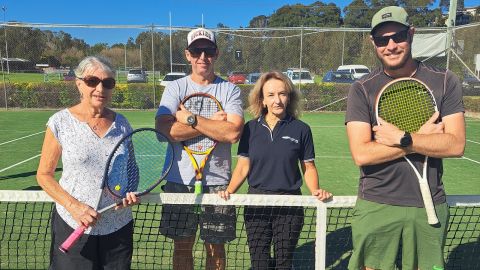The Palaszczuk Government will protect more than 131,900 hectares of land for conservation as part of a major land acquisition in the state’s Far North.
Premier Annastacia Palaszczuk said the government had purchased two former cattle properties – Bramwell Station and Richardson Station – 630 kilometres north west of Cairns.
“Conservation is vital when it comes to tackling climate change and supporting the local tourism industry,” the Premier said.
“This is one of the most significant purchases in Queensland history – linking close to one million hectares of protected land in a picturesque part of our state.
“Conserving and returning this land to Traditional Owners will create jobs and opportunities for local workers in the future.”
Environment Minister Meaghan Scanlon said the property would return to First Nations ownership and management through negotiation as part of the highly successful Cape York Peninsula Tenure Resolution Program.
“The area includes significant, undisturbed ecosystems and habitat that will become part of the protected area estate,” she said.
“Through the Cape York Peninsula Tenure Resolution Program, we will negotiate for which areas of the land will be made jointly managed national park and which areas become Aboriginal freehold land.”
The Cape York Peninsula Tenure Resolution Program returns ownership and management of identified lands on Cape York Peninsula to local Aboriginal Traditional Owners, while ensuring the region’s iconic natural and cultural values are protected.
Minister Scanlon said the purchase was highly strategic and represents a major win for the environment, Traditional Owners and the local economy.
“The Bramwell and Richardson properties connect with other protected areas, including Batavia National Park (Cape York Peninsula Aboriginal Land); Bromley (Ampulin) National Park (Cape York Peninsula Aboriginal Land); Michingun Nature Refuge; Heathlands Reserve and Steve Irwin Wildlife Reserve Nature Refuge.
“The lands also provide further opportunity to protect the Great Barrier Reef by stabilising two catchment areas that flow into the Great Barrier Reef lagoon.
“The properties connect with freehold land owned by the Bromley Aboriginal Corporation RNTBC and the Wuthathi Aboriginal Corporation, both of which worked with the Queensland Government to protect their traditional homelands from mining.”
Ms Scanlon said the existing Junction Roadhouse on Richardson Station at the intersection of the Bamaga Road and the start of the “Old Telegraph Track” would remain.
“The roadhouse and tourist park are vital to the local economy and the tourism industry and we will ensure provisions are made to allow these facilities to continue operating,” Ms Scanlon said.
Gerhardt Pearson, Executive Director of Balkanu Cape York Development Corporation P/L, said the corporation was delighted that the Traditional Owners of these properties would now be able to enjoy the cultural and economic benefits of their ancestral lands.
“I congratulate the State for successfully concluding this complex and long-running matter,” Mr Pearson said.
“Balkanu Cape York Development Corporation was pleased to help the state broker the outcome after many years of negotiation and planning.
“Traditional Owners of these strategic lands – gateway to northern Cape York, including the start of the telegraph track – can now work with the Traditional Owners of surrounding lands to better manage country and protected areas.”
The purchase price for the Bramwell and Richardson properties was $11.5 million (excluding GST), supported by a grant brokered by The Nature Conservancy Australia, of up to USD $2.362 million from the Wyss Foundation towards the purchase.
Dr James Fitzsimons, Director of Conservation and Science for The Nature Conservancy Australia, said the purchase of Richardson Station and Bramwell Station by the Queensland Government was a great achievement for conservation.
“The properties present significant conservation values with a number of priority ecosystems and species.
“They also offer high value for resilience to climate change which is critical for biodiversity protection,” Dr Fitzsimons said.
Molly McUsic, President of The Wyss Foundation, said the foundation was proud to support the outstanding track record of First Nations peoples in protecting and managing their Country, working with local communities and the Queensland Government.
“The purchase and protection of these important properties illustrates how local communities across Australia are contributing to the global goals of protecting the Earth’s lands and oceans,” Ms McUsic said.
With the area designated to be included in the National Reserve System, the Australian Government will also contribute $1.95 million to the lands’ purchase.
Dave Copeman, Director of the Queensland Conservation Council, said the purchase of the Cape York properties demonstrated the Queensland Government’s ongoing commitment to protecting one of Australia’s most significant regions in partnership with First Nations people.
“The Conservation movement in Queensland is united in our understanding of the importance of protecting Cape York and the critical role that First Nations play in healing country,” Mr Copeman said.
The purchase builds on the 10-year Queensland’s Protected Area Strategy 2020-2030, a major plan for supporting the growth, management and sustainability of national parks and other protected areas.
“I recently had the pleasure of announcing another multi-million dollar co-investment partnership with The Nature Conservancy and the Wyss Foundation for the purchase of a 35,300 hectare former grazing property north of Hughenden – The Lakes – to add to our protected area estate.
“With the help of The Nature Conservancy and the Wyss Foundation our purchase of Bramwell Station and Richardson Station adds significantly more to our protected areas, which total more than 14 million hectares across Queensland and include national parks, conservation parks, nature refuges and special wildlife reserves,” Ms Scanlon said.







